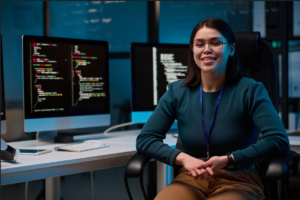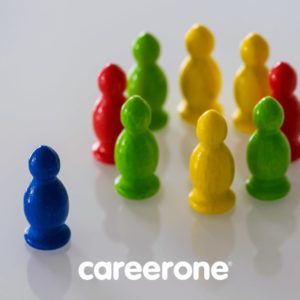Students get a feel for the workplace
Getting out of school to be part of the adult world for a week is one of the highlights of high school work experience placements, but there are other benefits too.
For Phillip Naumovski, 15, a student at Edmund Rice College, a recent one-week placement at Centrelink’s Illawarra call centre has allowed him to get a taste of one possible career path.
It’s also given him a sense of what working life beyond the classroom is like: “It’s a lot more tiring than school.”
During his placement, Naumovski, who wants study information technology as an elective next year, shadowed the local area network support officer at the call centre.
This included compiling staff log-ons and linking their skill tags with the seating plan and updating the telephony database, as well as assisting the support officer with patching phone lines, and following up staff software issues and faulty PCs and printers.
“It is an area I’d like to work in, but I’m interested in lots of other things, too,” Naumovski says.
Work experience students are exposed to a range of tasks and get a feel for different business cultures.
In this way, the experience can be a stepping stone between work and school, giving students greater confidence when entering the workforce, according to a spokesman for the Human Services Portfolio, which covers agencies including Centrelink, Medicare, Australian Hearing and CRS Australia, which helps disabled and injured people find work.
“A number of work experience students have returned to Centrelink and Medicare Australia for full-time employment or found jobs in related industries,” the spokesman says. “CRS Australia also has a number of students return as paid workers.”
One reason for this is that students gain valuable on-the-job experience while developing the skills and knowledge of the business and operations of different departments and, more broadly, of the public service.
“Centrelink is now working with other agencies within the portfolio, such as the Department of Human Services and Medicare Australia, to look at developing a cross-portfolio work experience program,” the spokesman says.
It would introduce more young people to customer service roles and also build stronger ties with local communities, he adds.
Medicare Australia offers a particularly innovative program structured across two years and undertaken by students at the start of Year 11.
While it operates only in Western Australia at present, there are plans to expand it nationally.
The program is run through a work provider, South Metropolitan Youth Link, the Human Services Portfolio spokesman explains.
“SMYL provides Medicare Australia work experience students with a booklet of tasks to complete throughout the program,” he says.
“These tasks increase in complexity as the work experience program progresses, and are credited towards the student’s high school studies.
“Work experience students spend one to two days a week at Medicare Australia during their time with the program [and] throughout the program students are rotated through different Medicare Australia internal business areas.
“Work experience supervisors are encouraged to work with students to[build on] their points of interest.”
But work experience is no longer just for high school students.
CRS Australia offers tertiary students the ability to complete field placements that are part of their course requirements and thus gain exposure to the agency.
This is valuable in raising awareness of the services CRS Australia delivers and of its potential as a future employer, the spokesman says.
Where possible, student placements at CRS Australia are offered in the fields of psychology, occupational therapy, rehabilitation counselling, social work, speech pathology and physiotherapy, with students able to assist or observe professional staff in relation to specialist assessments, case management or job-placement activities.
Given the many benefits of work experience, competition for placements can be intense.
Centrelink receives numerous requests for work experience placements, with 24 placements recorded during the past year.
Meanwhile, eight high school students go through Medicare Australia’s work experience program each year, with four Year 11 students and four Year 12 students undertaking the program at present.
As the national public broadcaster, the ABC also offers a structured work experience program.
Although the ABC operates in all Australian states and territories, its activities differ from state to state, so they do not all offer the same work experience opportunities.
For example, in NSW, the television production work experience placement scheme allows two participants a fortnight to experience how TV programs are produced at the ABC; while the Radio National work experience scheme allows students to observe program production and live-to-air programs.
Fancy working in children’s TV? Play School offers the opportunity for students to observe two episodes of the show in rehearsal and in studio.
This enables them to gain an understanding of how the actors, directors, designers, musicians and general production team work together to create a Play School episode.
Other public-sector organisations that offer structured work experience programs include the Department of Immigration and Citizenship, the Department of Defence, and Geoscience Australia.



